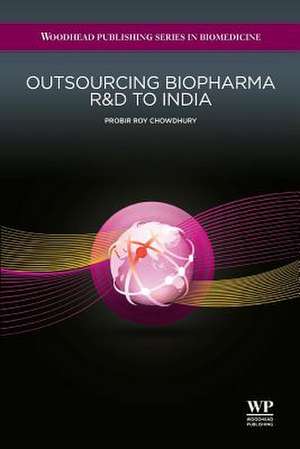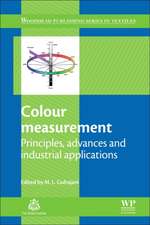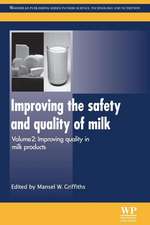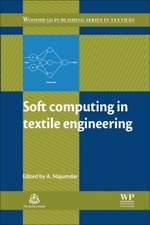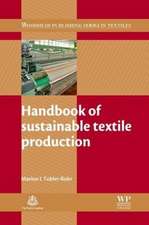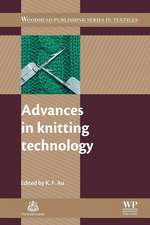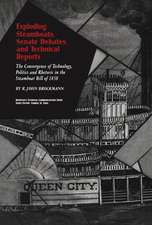Outsourcing Biopharma R&D to India: Woodhead Publishing Series in Biomedicine
Autor P R Chowdhuryen Limba Engleză Paperback – 18 aug 2016
- Constitutes the first ever comprehensive insight on the Indian biopharma sector
- Provides a perspective based on practical hands-on legal experience
- Simply structured, clearly presented and free from excessive legal jargon
Preț: 807.90 lei
Preț vechi: 887.81 lei
-9% Nou
Puncte Express: 1212
Preț estimativ în valută:
154.61€ • 160.82$ • 127.64£
154.61€ • 160.82$ • 127.64£
Carte tipărită la comandă
Livrare economică 08-22 aprilie
Preluare comenzi: 021 569.72.76
Specificații
ISBN-13: 9780081017340
ISBN-10: 0081017340
Pagini: 130
Dimensiuni: 156 x 234 x 7 mm
Greutate: 0.2 kg
Editura: ELSEVIER SCIENCE
Seria Woodhead Publishing Series in Biomedicine
ISBN-10: 0081017340
Pagini: 130
Dimensiuni: 156 x 234 x 7 mm
Greutate: 0.2 kg
Editura: ELSEVIER SCIENCE
Seria Woodhead Publishing Series in Biomedicine
Cuprins
Acknowledgements
About the author
Chapter 1: Biopharma outsourcing in India: its evolution
Abstract:
1.1 What is outsourcing?
1.2 What is R&D?
1.3 Organisational patterns in R&D outsourcing
1.4 R&D outsourcing in the pharmaceutical industry
1.5 India as the emerging hub of R&D outsourcing in the pharmaceutical industry
1.6 Outsourcing models prevalent in India: cooperation models for outsourced services
1.7 Key issues involved in outsourcing
Chapter 2: India’s core competitive advantage in R&D in the biopharma sector: the impetus for outsourcing
Abstract:
2.1 Introduction
2.2 Cost competitiveness
2.3 Resources and skill
2.4 The role of the government
2.5 Conclusion
Chapter 3: Different modes of outsourcing biopharma R&D to India
Abstract:
3.1 Indian companies involved in outsourcing activities6
3.2 Contract research services
3.3 Contract manufacturing organisations
3.4 Drug substance manufacturing
3.5 Drug product manufacturing
3.6 Process development
3.7 Analytical methods and characterisation
3.8 Business models for contract manufacturing organisations
3.9 Insights into outsourcing of product development and manufacture
3.10 Clinical trials
3.11 Advantages and disadvantages of doing clinical trials in India
3.12 Active pharmaceutical ingredient and technology transfer
3.13 Conclusions and implications
Chapter 4: The Indian regulatory environment: a historical perspective
Abstract:
4.1 Indian Council for Medical Research
4.2 Central Drugs Standard Control Organisation
4.3 Department of Biotechnology
4.4 National Pharmaceutical Pricing Authority
4.5 Overview of the industry
Chapter 5: Implications of the changing regulatory environment in India
Abstract:
5.1 Introduction
5.2 Capacity Building Programme: recent development5
5.3 Clinical Trials Registry – India11
5.4 The Indian Society for Clinical Research12
5.6 Conclusion
Chapter 6: Creating contracts for outsourcing in the biopharma industry
Abstract:
6.1 Biopharma outsourcing
6.2 Preliminary documentation
6.3 Drafting of the biopharma outsourcing agreement
6.4 Specific considerations in different types of agreements
6.5 Conclusion
Chapter 7: Environmental, health and safety guidelines and biopharma outsourcing: an Indian perspective
Abstract:
7.1 Introduction
7.2 The environmental, health and safety guidelines
7.3 EHS guidelines and India
7.4 Challenges faced by Indian companies in EHS compliance
7.5 Conclusion
Chapter 8: Certifications
Abstract:
8.1 Introduction
8.2 Certifications
8.3 Manufacturing licence
8.4 Good Manufacturing Practices
8.5 No-Objection Certificate and Certificate of Origin
8.6 Certificate of a Pharmaceutical Product
8.7 Certifications for clinical trials
8.8 International regulatory certifications
8.9 Conclusion
Chapter 9: The need for due diligence of service providers
Abstract:
9.1 Introduction
9.2 Sources utilised prior to due diligence
9.3 Areas of due diligence
9.4 Due diligence process
9.5 Contents of the due diligence report6
9.6 Conclusion
Index
About the author
Chapter 1: Biopharma outsourcing in India: its evolution
Abstract:
1.1 What is outsourcing?
1.2 What is R&D?
1.3 Organisational patterns in R&D outsourcing
1.4 R&D outsourcing in the pharmaceutical industry
1.5 India as the emerging hub of R&D outsourcing in the pharmaceutical industry
1.6 Outsourcing models prevalent in India: cooperation models for outsourced services
1.7 Key issues involved in outsourcing
Chapter 2: India’s core competitive advantage in R&D in the biopharma sector: the impetus for outsourcing
Abstract:
2.1 Introduction
2.2 Cost competitiveness
2.3 Resources and skill
2.4 The role of the government
2.5 Conclusion
Chapter 3: Different modes of outsourcing biopharma R&D to India
Abstract:
3.1 Indian companies involved in outsourcing activities6
3.2 Contract research services
3.3 Contract manufacturing organisations
3.4 Drug substance manufacturing
3.5 Drug product manufacturing
3.6 Process development
3.7 Analytical methods and characterisation
3.8 Business models for contract manufacturing organisations
3.9 Insights into outsourcing of product development and manufacture
3.10 Clinical trials
3.11 Advantages and disadvantages of doing clinical trials in India
3.12 Active pharmaceutical ingredient and technology transfer
3.13 Conclusions and implications
Chapter 4: The Indian regulatory environment: a historical perspective
Abstract:
4.1 Indian Council for Medical Research
4.2 Central Drugs Standard Control Organisation
4.3 Department of Biotechnology
4.4 National Pharmaceutical Pricing Authority
4.5 Overview of the industry
Chapter 5: Implications of the changing regulatory environment in India
Abstract:
5.1 Introduction
5.2 Capacity Building Programme: recent development5
5.3 Clinical Trials Registry – India11
5.4 The Indian Society for Clinical Research12
5.6 Conclusion
Chapter 6: Creating contracts for outsourcing in the biopharma industry
Abstract:
6.1 Biopharma outsourcing
6.2 Preliminary documentation
6.3 Drafting of the biopharma outsourcing agreement
6.4 Specific considerations in different types of agreements
6.5 Conclusion
Chapter 7: Environmental, health and safety guidelines and biopharma outsourcing: an Indian perspective
Abstract:
7.1 Introduction
7.2 The environmental, health and safety guidelines
7.3 EHS guidelines and India
7.4 Challenges faced by Indian companies in EHS compliance
7.5 Conclusion
Chapter 8: Certifications
Abstract:
8.1 Introduction
8.2 Certifications
8.3 Manufacturing licence
8.4 Good Manufacturing Practices
8.5 No-Objection Certificate and Certificate of Origin
8.6 Certificate of a Pharmaceutical Product
8.7 Certifications for clinical trials
8.8 International regulatory certifications
8.9 Conclusion
Chapter 9: The need for due diligence of service providers
Abstract:
9.1 Introduction
9.2 Sources utilised prior to due diligence
9.3 Areas of due diligence
9.4 Due diligence process
9.5 Contents of the due diligence report6
9.6 Conclusion
Index
